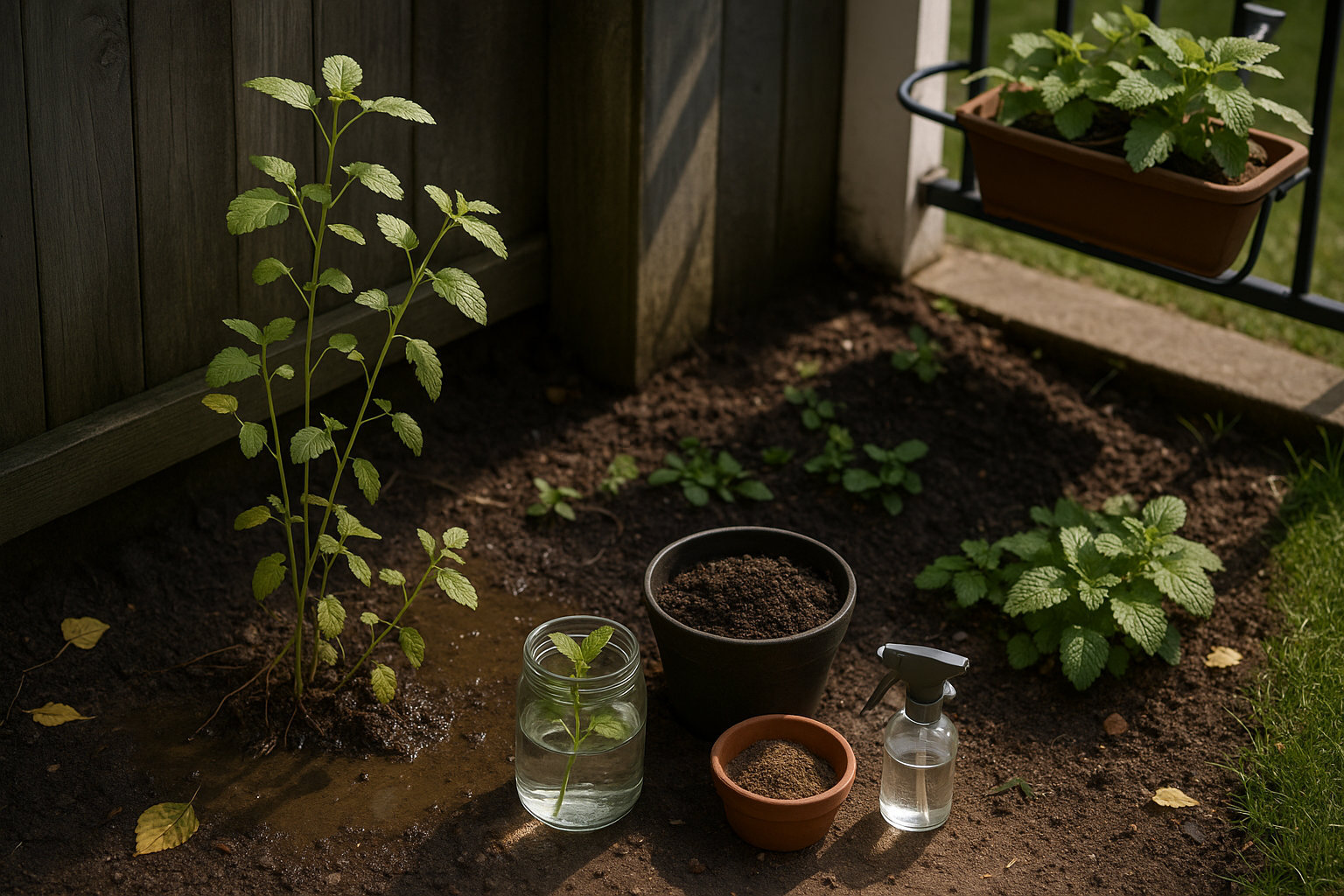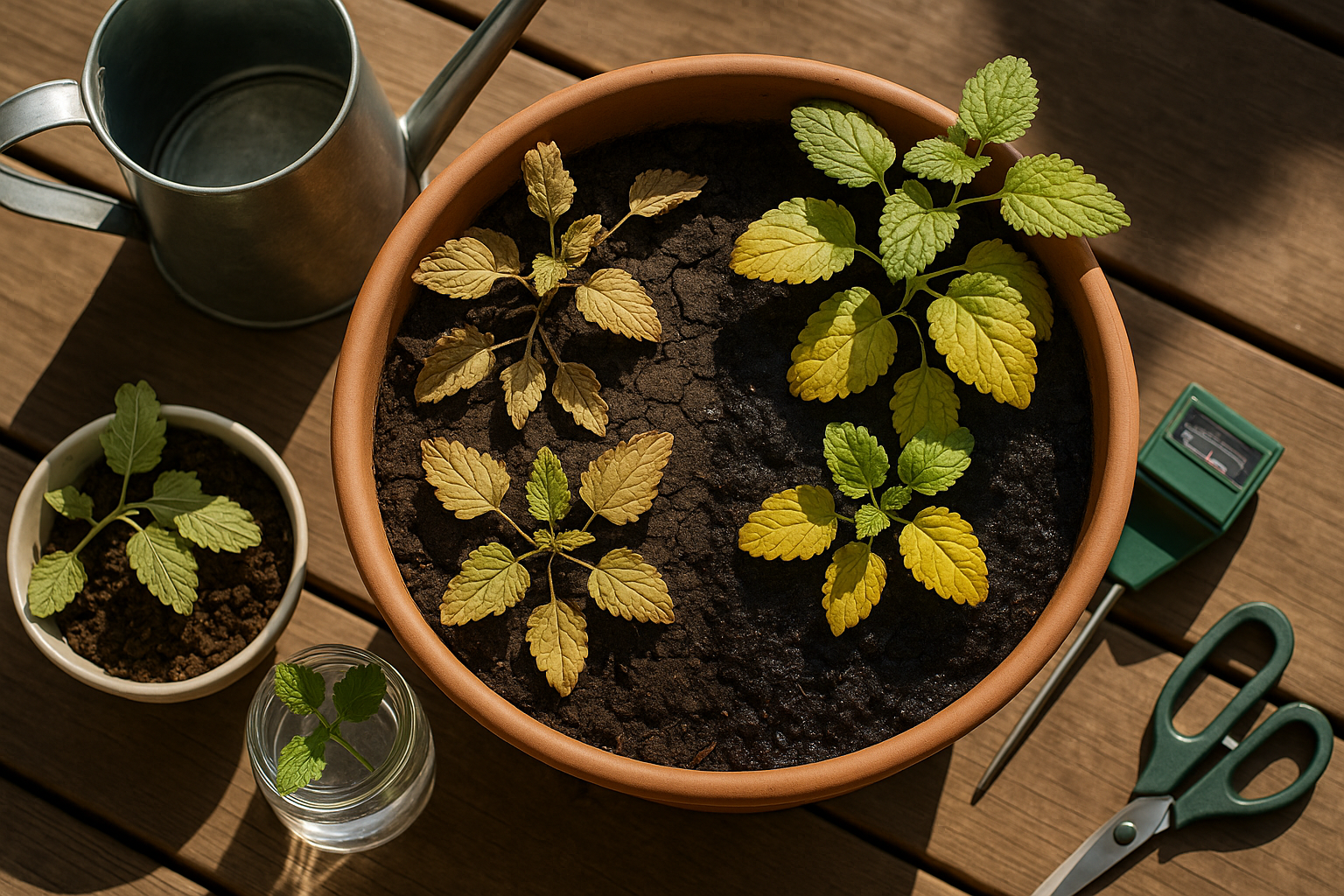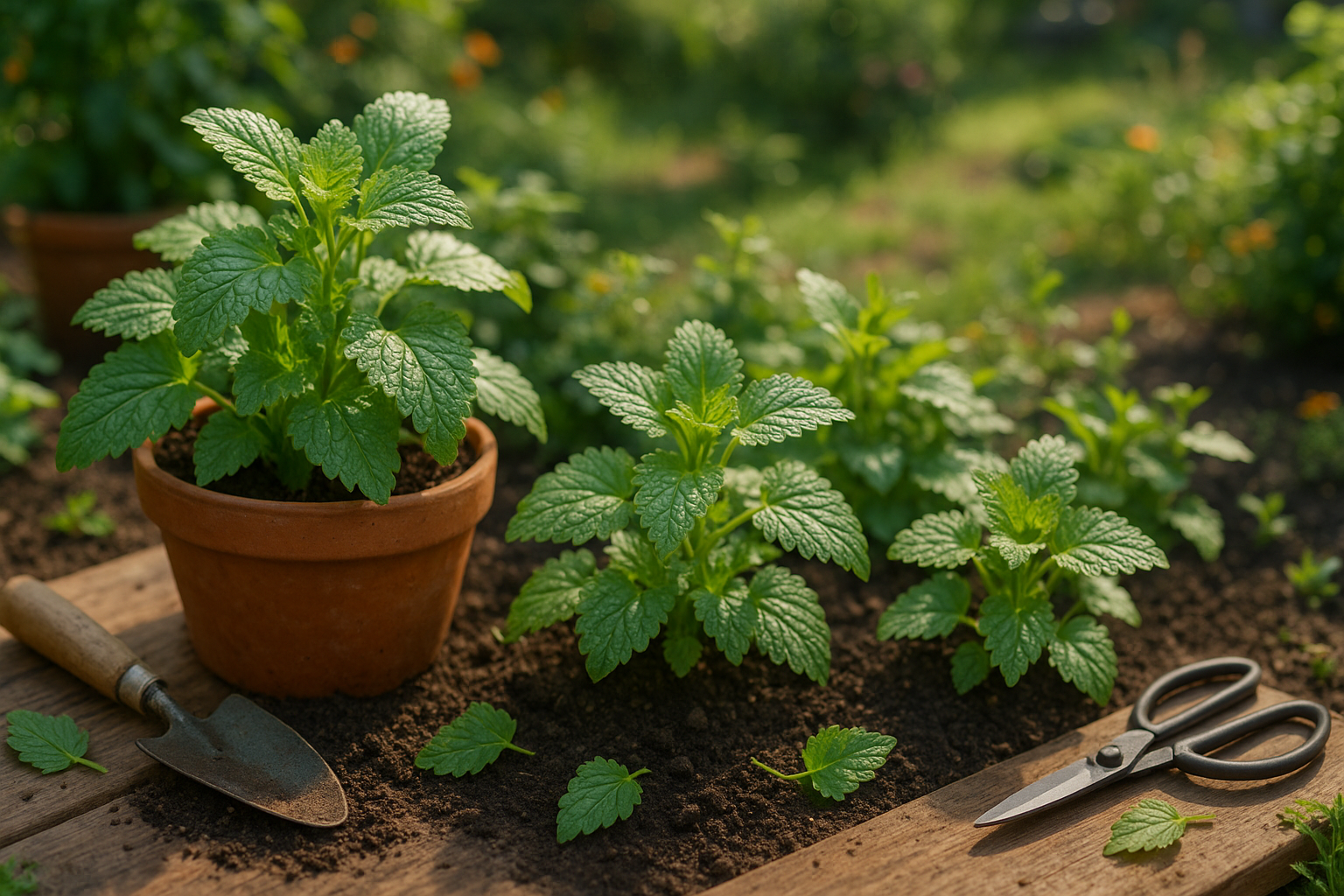Introduction to Lemon Balm & Its Growing Needs
Lemon balm growing mistakes can frustrate even the most dedicated home gardeners, turning what should be a simple, rewarding herb into a troublesome challenge. Lemon balm (Melissa officinalis) is a fragrant perennial herb cherished for its bright, citrusy leaves and gentle flavor, making it a top choice for teas, culinary dishes, and natural remedies. Its calming properties have also earned it a place in traditional medicine cabinets for centuries.
As easy as it might seem to nurture, lemon balm comes with a few quirks—understanding these is crucial to achieving lush, healthy growth. Many gardeners expect this adaptable herb to thrive with minimal care, but small missteps like poor soil drainage, overcrowding, or ignoring its sunlight needs can quickly lead to poor yield or leggy, unproductive plants.
With its rising popularity in home gardens and balcony planters, knowing which lemon balm growing mistakes to avoid is more important than ever. In this article, we’ll dig into the most common pitfalls and share practical advice so you can enjoy vibrant, aromatic lemon balm that elevates your cooking, soothes your senses, and beautifies your space—all with less frustration and more success.
Poor Location and Light Mistakes

Choosing the right spot for your garden can make or break your growing season. Sun exposure is a top priority: most vegetables and herbs need at least six hours of direct sunlight daily. Planting in too much shade—often near fences or under trees—results in spindly plants with fewer blooms and poor harvests.
Equally important is checking your soil’s drainage. A patch that collects puddles after rain will suffocate roots and invite disease. Crowding your plants too close together is another rookie mistake, as it limits airflow, encourages pests, and reduces yields.
If you’re working with containers on a balcony or patio, move pots throughout the day to follow the sun and use well-draining soil blends. As a rule of thumb, scout your potential planting site on a sunny afternoon. Touch the soil: is it loose and crumbly, or heavy and soggy? Also, leave enough room—both above and below ground—for your plants to spread.
By paying attention to these details, you’ll ensure your plants get the sunlight, air, and root space they need to thrive, resulting in healthier growth and more flavorful produce all season long.
Watering Errors

Consistent, moderate watering is key to growing healthy lemon balm, but it’s easy to make mistakes like letting the soil completely dry out or, on the flip side, leaving it perpetually soggy. Either extreme can stress your plant and cause issues such as yellowing leaves, wilting, and even root rot—a condition where roots suffocate and die due to excess moisture.
Under-watering usually causes the leaves to droop, curl, or develop dry, brown edges. Over-watering, on the other hand, leads to soft, limp, yellow leaves and a musty smell from the soil.
To find the right balance, check the top inch of soil every few days. If it feels dry, it’s time to water; if it’s still moist, wait another day or two. Using mulch, such as shredded bark or compost, can help keep soil moisture levels stable by reducing evaporation, especially during peak summer heat.
In hotter months, your lemon balm may need water more often—sometimes daily if it’s particularly warm or windy—but always avoid letting water pool at the base. Conversely, as temperatures cool in autumn and winter, scale back watering and let the surface dry out a bit before watering again, since plants use less water during cooler, slower-growing periods.
Establishing a routine based on seasonal changes and regular soil checks will keep your lemon balm thriving without the stress of over-watering or neglect. This steady approach, rather than erratic soaking or drought, encourages a resilient, vibrant plant that can bounce back from occasional lapses and continue providing lush, fragrant foliage for your kitchen or garden.
Neglecting Regular Pruning and Harvesting
Neglecting regular pruning and harvesting is one of the most common mistakes gardeners make, especially with herbs like basil, mint, or oregano. Pruning might feel counterintuitive—why cut plants you want to grow bigger?—but it’s actually the secret to bushy, healthy plants.
When you regularly pinch or snip off the top few inches, you encourage lateral growth, creating a fuller shape instead of a single tall stalk. This approach not only boosts the number of leaves available for harvest but also delays flowering, which can sap flavor and tenderness from the leaves.
A major mistake is letting plants grow unchecked; they’ll quickly become leggy, sparse, and bolt to seed, leaving you with fewer usable leaves. Irregular harvesting or simply yanking leaves from anywhere on the plant can also harm their growth.
For best results, prune your herbs every couple of weeks during peak growing season. Use clean scissors or your fingers to cut just above a pair of healthy leaves—this is where new shoots will branch out.
When harvesting, focus on taking about one-third of the plant at a time, always working from the top down. Avoid cutting into the woody base, as this can stunt regrowth.
Regular maintenance means more flavorful leaves now and a more productive plant throughout the season—so set a schedule and make pruning a simple, rewarding part of your gardening routine.
Ignoring Pest and Disease Issues
Lemon balm is generally a hardy, easy-to-grow herb, but common pests like aphids and spider mites, as well as diseases such as powdery mildew and root rot, can cause big problems if ignored. Skipping regular plant inspections or failing to keep your gardening tools and pots clean opens the door to these headaches—pests thrive on neglected leaves, while damp, crowded conditions encourage fungal issues like mildew.
To keep your lemon balm healthy, check the undersides of leaves weekly for clusters of bugs or webbing, and promptly remove any affected foliage. Give your plants plenty of space and water them at the soil level to reduce excess moisture on leaves, which deters mildew.
If you spot aphids or mites, a simple blast with a hose or a spray of diluted dish soap can help keep populations down without chemicals. For mildew, prune to increase airflow and use a homemade baking soda spray as a mild remedy. Always remove and dispose of any heavily infected plants to prevent problems from spreading.
By staying attentive and practicing good hygiene, you can avoid most issues and keep your lemon balm lush and productive.
Problems with Soil Quality and Nutrition
Poor soil quality or nutrient imbalances can seriously hamper the growth and vitality of lemon balm, a herb that thrives best in well-draining, moderately fertile soil. When soil is overly depleted—lacking essential nutrients like nitrogen, phosphorus, and potassium—the plant often develops pale, stunted leaves and sluggish growth.
On the other hand, soil that’s too rich, especially with excessive nitrogen, can encourage lush leafy growth at the expense of the plant’s aromatic oils and overall flavor, making your lemon balm less fragrant and less useful in the kitchen.
Common mistakes include neglecting to fertilize altogether, which leads to chronic deficiencies, or over-fertilizing, which can “burn” roots or cause weak, leggy stems.
It’s best to strike a balance by incorporating organic compost into your garden bed each season or mixing well-rotted manure into the soil before planting. Try performing a simple soil test before planting to check nutrient levels and pH—lemon balm prefers neutral to slightly alkaline soil (pH 6.7–7.3).
If nutrients are lacking, opt for a balanced, slow-release fertilizer, applying only as recommended by the manufacturer to avoid excess.
Mulching with compost, leaf mold, or aged bark not only adds nutrients gradually but also helps retain moisture and regulate soil temperature.
Remember, moderation is key: a steady, balanced supply of nutrients supports strong, resilient growth and ensures your lemon balm plants remain robust, flavorful, and productive throughout the growing season.
Overlooking Seasonal and Environmental Factors
One common mistake gardeners make with lemon balm is overlooking how much seasonal and environmental factors can impact the plant’s success. Lemon balm may be hardy in USDA zones 4-9, but that doesn’t mean it thrives in every situation without some attention to detail.
For instance, planting lemon balm too early in spring, before the soil has warmed, can stunt its growth or expose it to late frosts. Likewise, ignoring temperature fluctuations—like early fall cold snaps—can damage new growth if the plant isn’t established or protected.
In colder climates, where winters dip well below freezing, lemon balm can survive outdoors, but it benefits from a little help: apply a thick mulch of straw or leaves over the crown in late fall to insulate the roots and protect against freeze-thaw cycles. If you grow lemon balm in containers, consider moving pots to a sheltered spot or even indoors before hard frosts hit.
Throughout the year, regular pruning after each harvest encourages bushy regrowth and prevents legginess, while consistent watering—especially during hot, dry spells—keeps the plant vibrant and aromatic. By timing planting carefully, adding winter protection, and maintaining the plant through all seasons, you’ll enjoy lush, fragrant lemon balm year after year.
